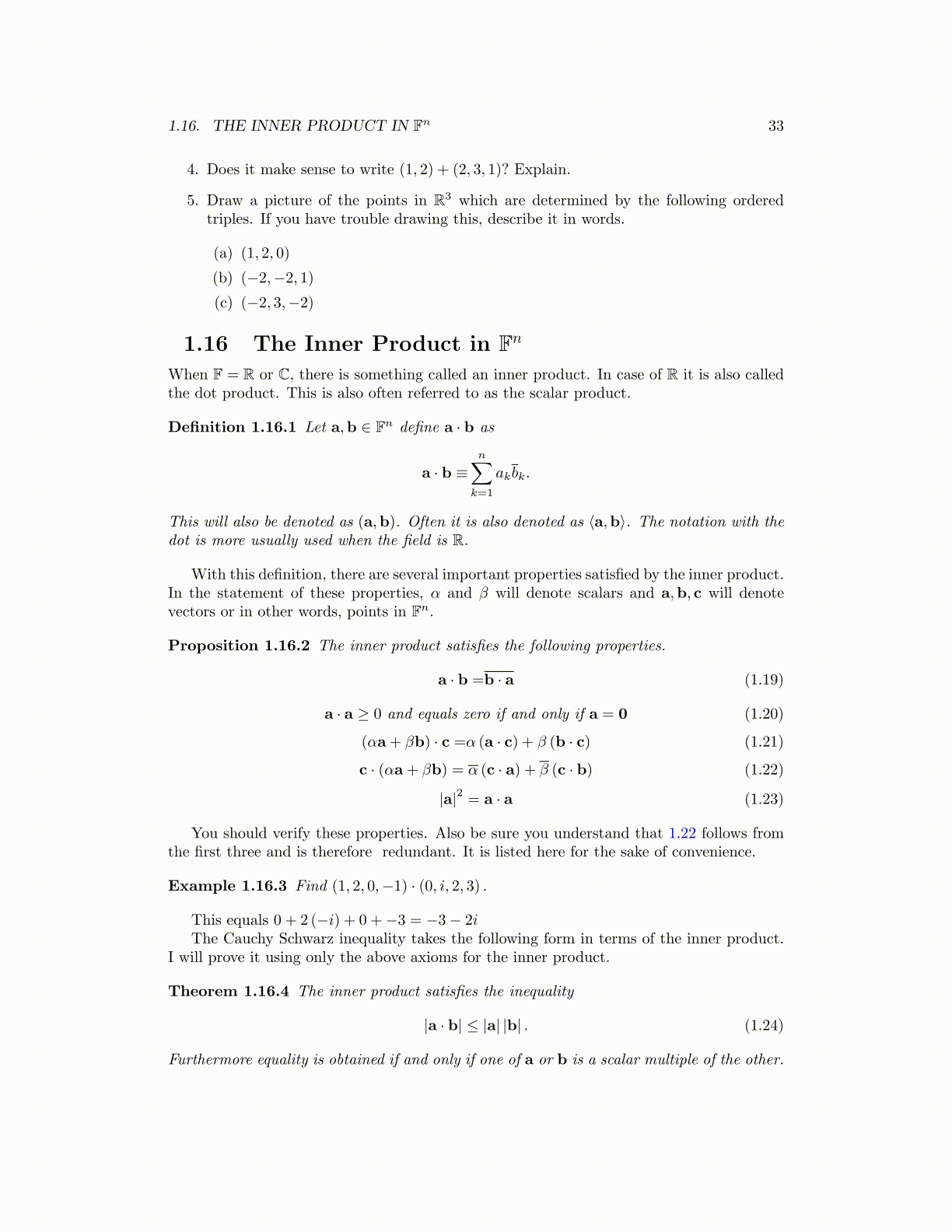
1.16. THE INNER PRODUCT IN Fn 33
4. Does it make sense to write (1, 2) + (2, 3, 1)? Explain.
5. Draw a picture of the points in R3 which are determined by the following orderedtriples. If you have trouble drawing this, describe it in words.
(a) (1, 2, 0)
(b) (−2,−2, 1)
(c) (−2, 3,−2)
1.16 The Inner Product in FnWhen F = R or C, there is something called an inner product. In case of R it is also calledthe dot product. This is also often referred to as the scalar product.
Definition 1.16.1 Let a,b ∈ Fn define a · b as
a · b ≡n∑
k=1
akbk.
This will also be denoted as (a,b). Often it is also denoted as ⟨a,b⟩. The notation with thedot is more usually used when the field is R.
With this definition, there are several important properties satisfied by the inner product.In the statement of these properties, α and β will denote scalars and a,b, c will denotevectors or in other words, points in Fn.
Proposition 1.16.2 The inner product satisfies the following properties.
a · b =b · a (1.19)
a · a ≥ 0 and equals zero if and only if a = 0 (1.20)
(αa+ βb) · c =α (a · c) + β (b · c) (1.21)
c · (αa+ βb) = α (c · a) + β (c · b) (1.22)
|a|2 = a · a (1.23)
You should verify these properties. Also be sure you understand that 1.22 follows fromthe first three and is therefore redundant. It is listed here for the sake of convenience.
Example 1.16.3 Find (1, 2, 0,−1) · (0, i, 2, 3) .
This equals 0 + 2 (−i) + 0 +−3 = −3− 2iThe Cauchy Schwarz inequality takes the following form in terms of the inner product.
I will prove it using only the above axioms for the inner product.
Theorem 1.16.4 The inner product satisfies the inequality
|a · b| ≤ |a| |b| . (1.24)
Furthermore equality is obtained if and only if one of a or b is a scalar multiple of the other.